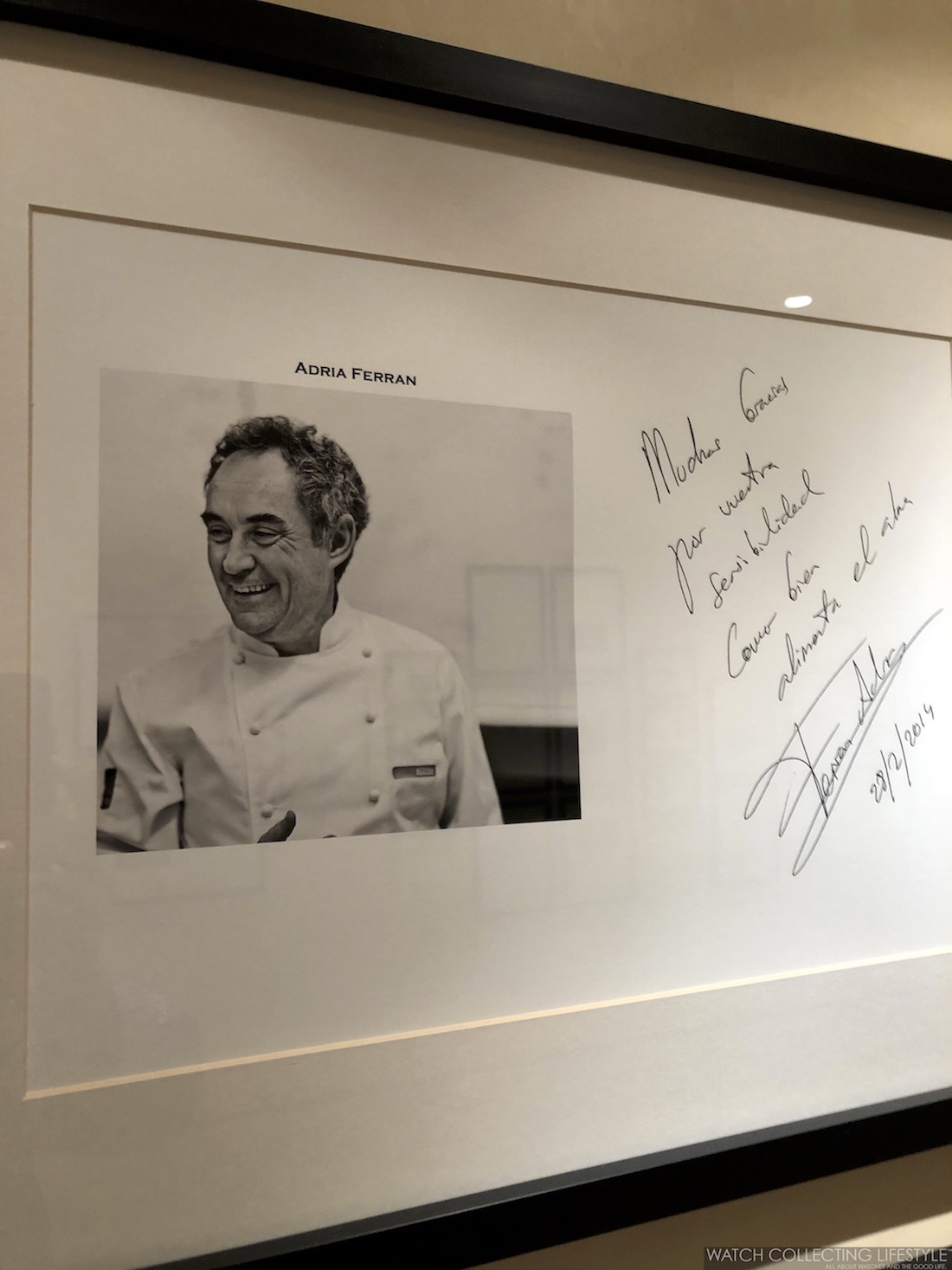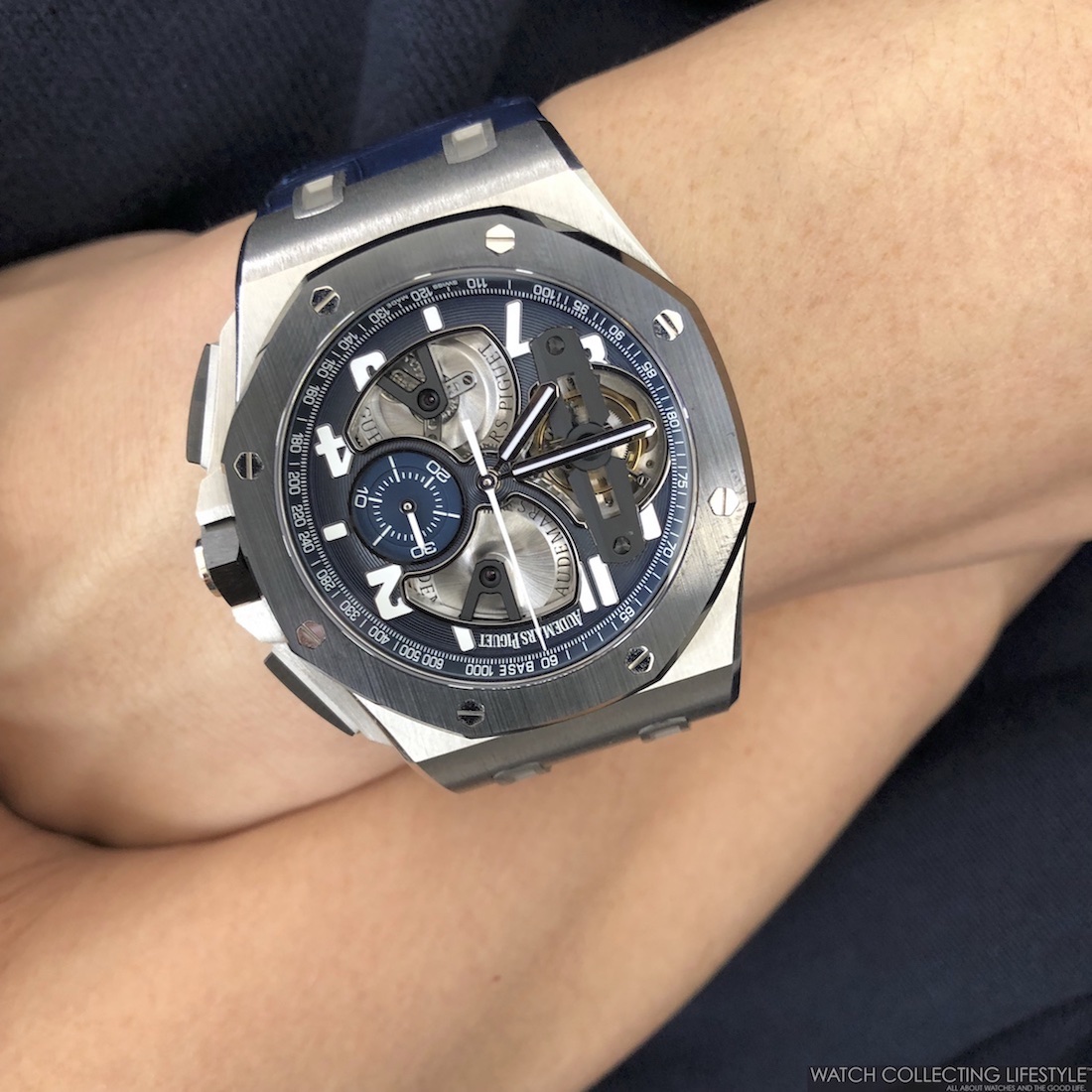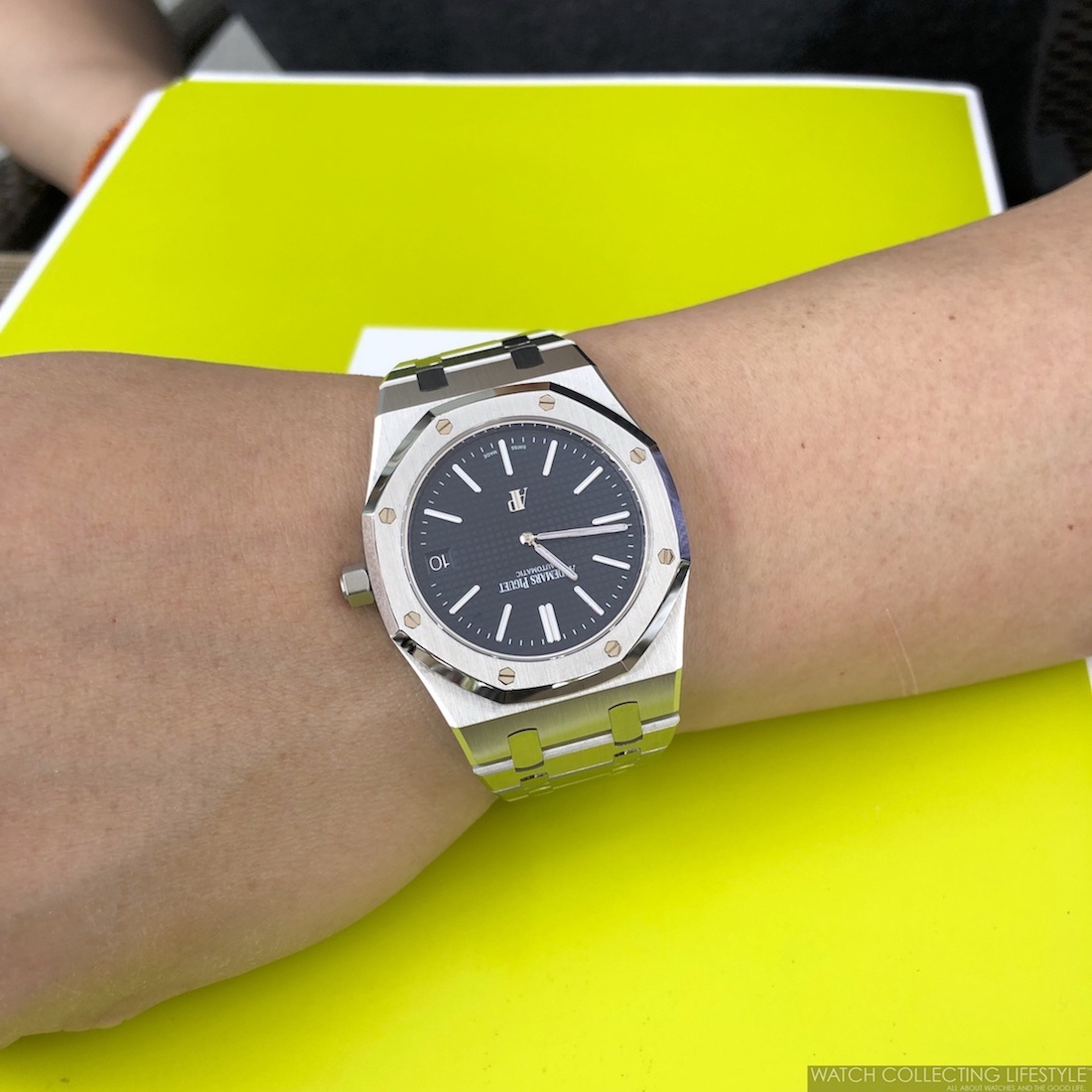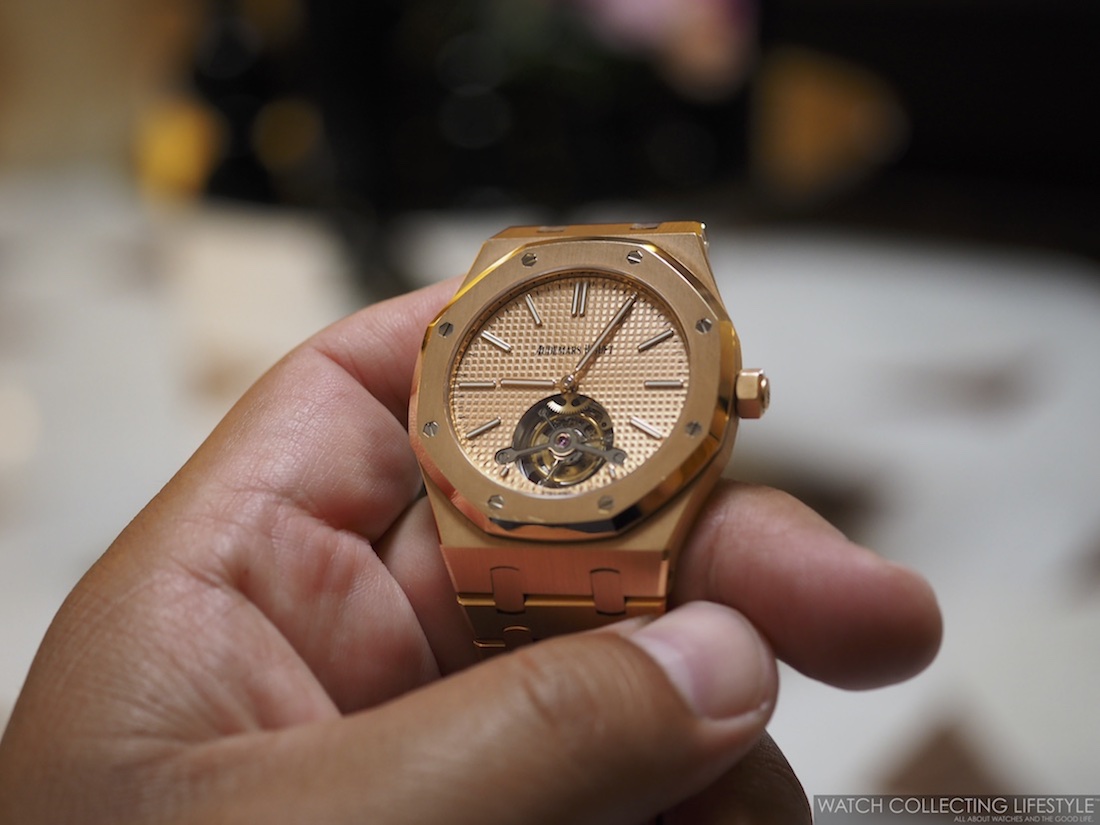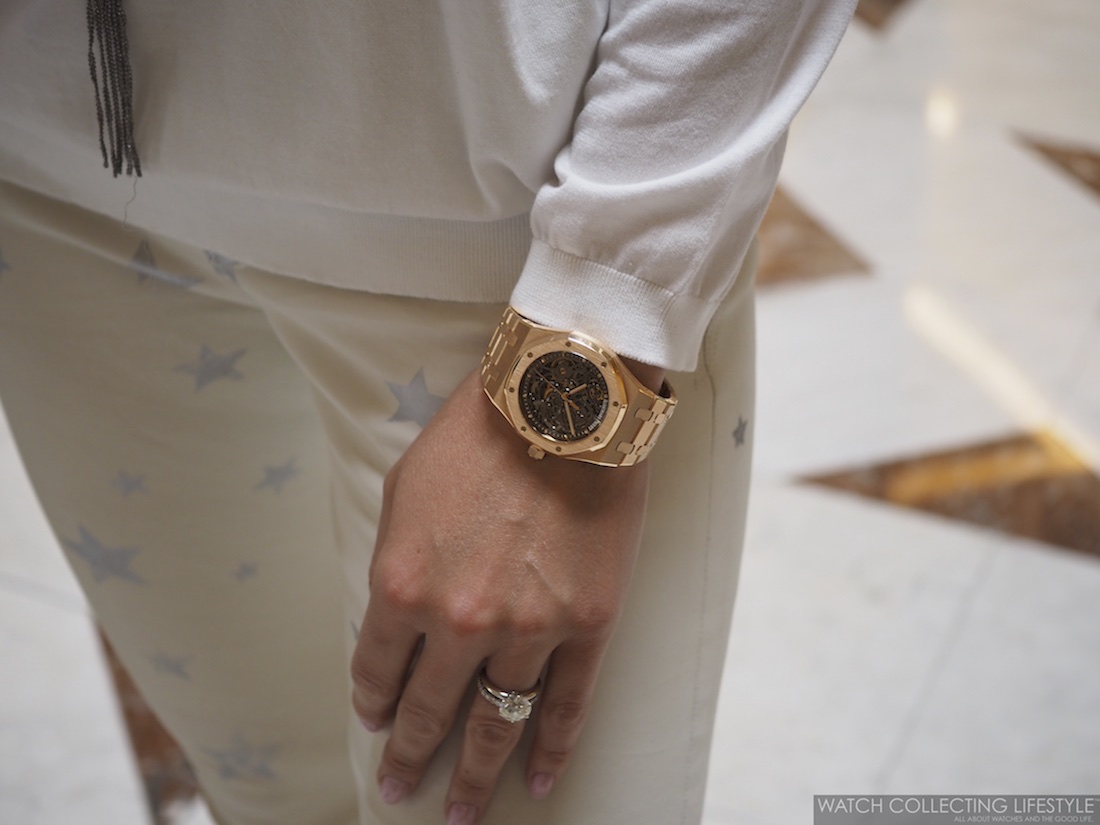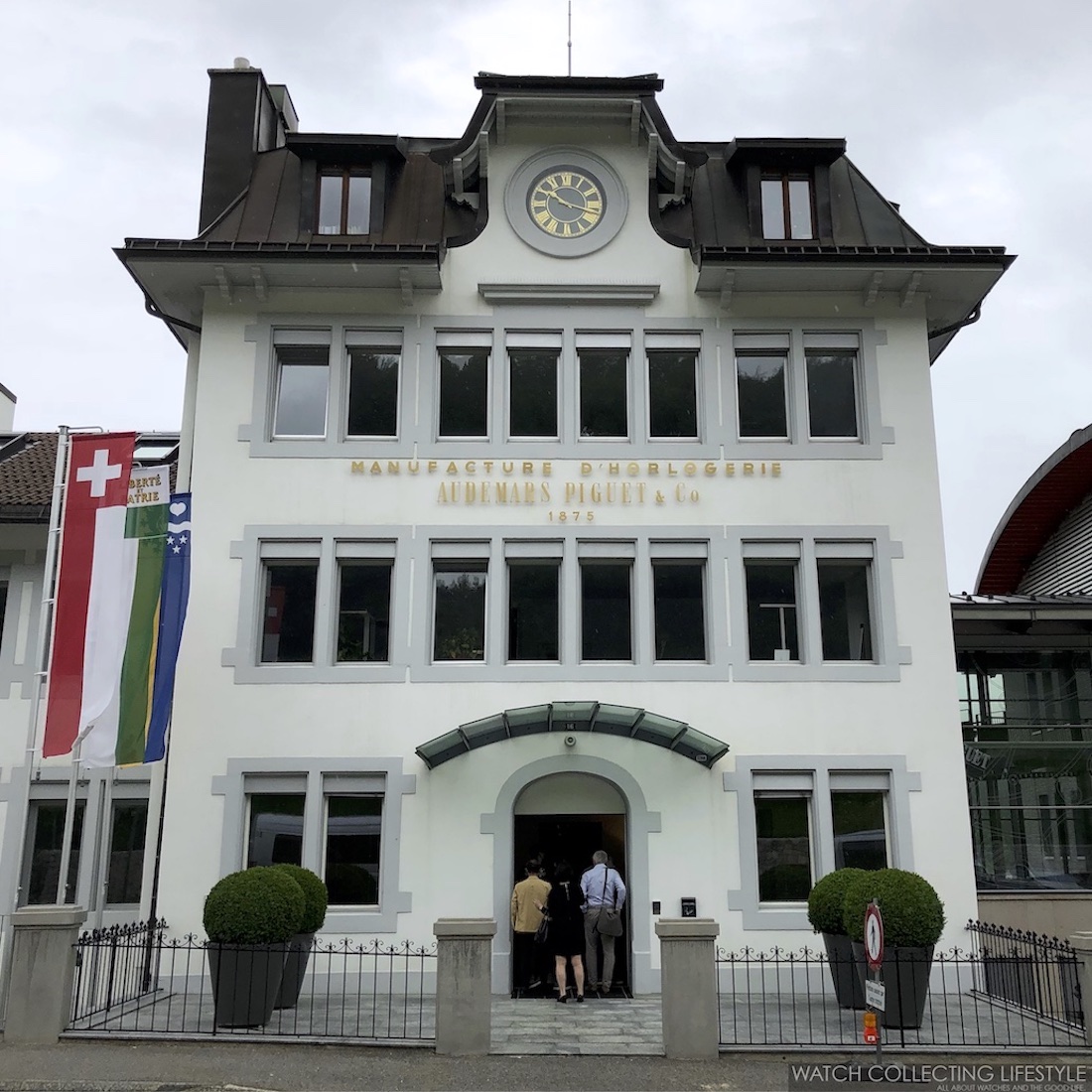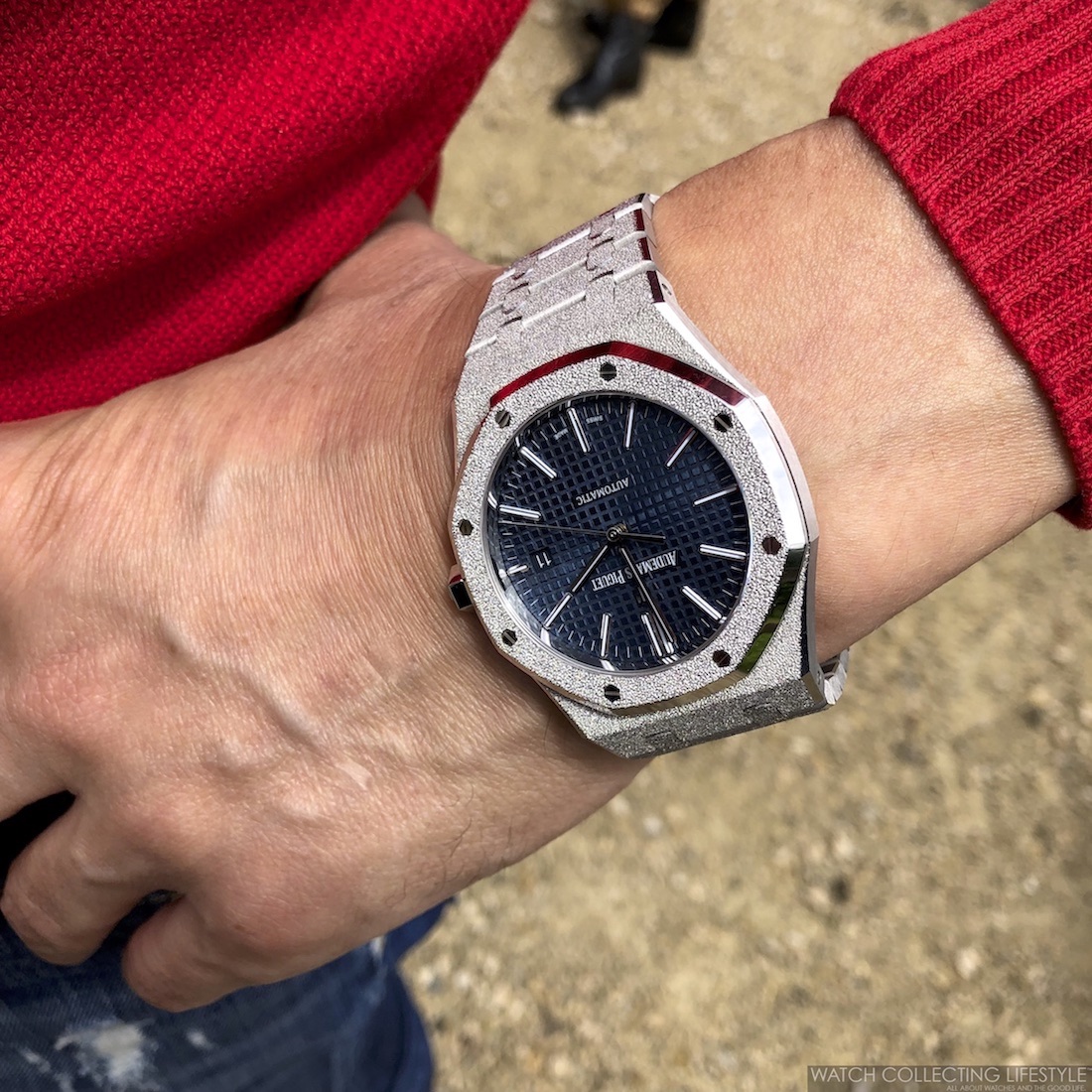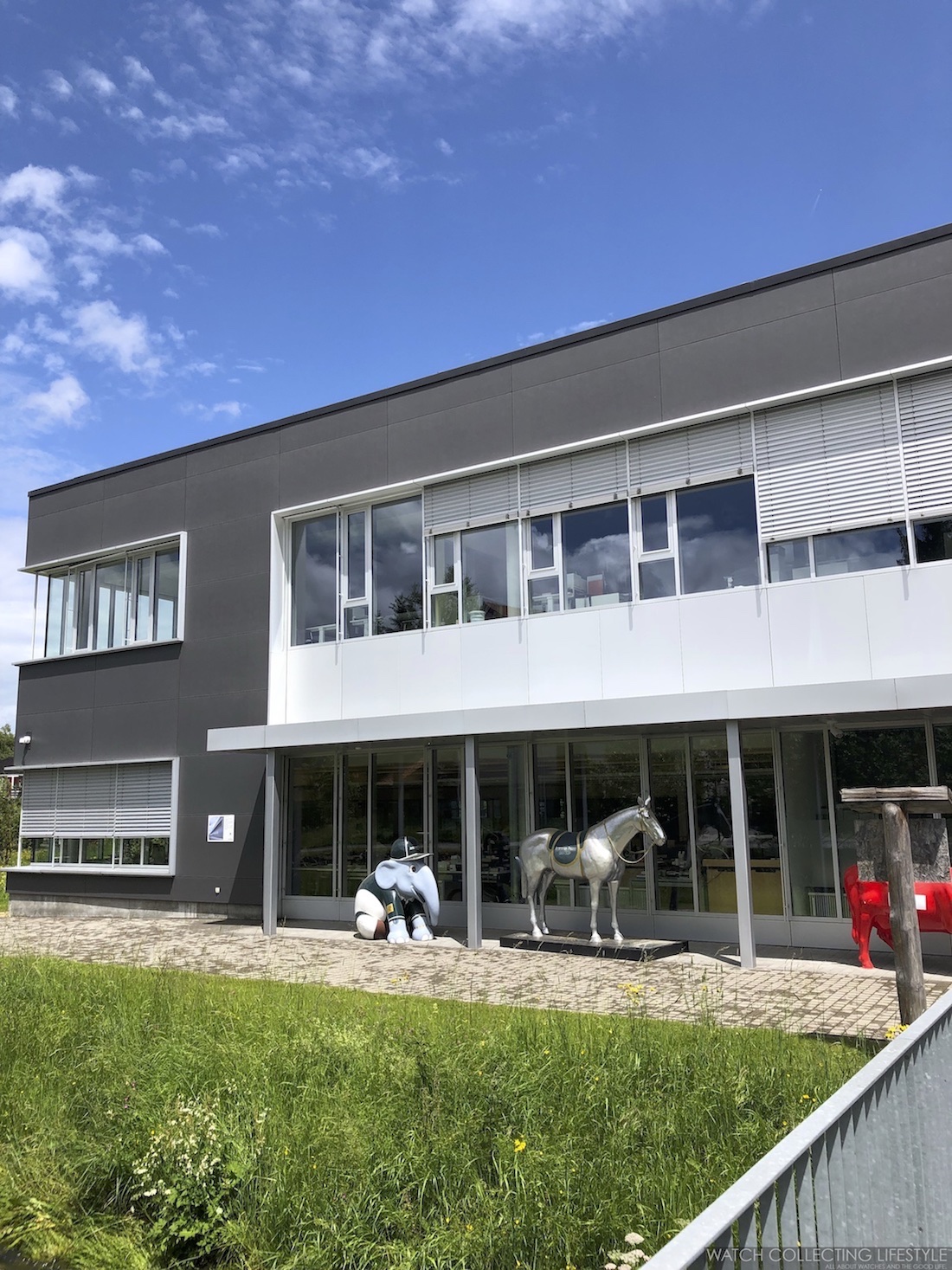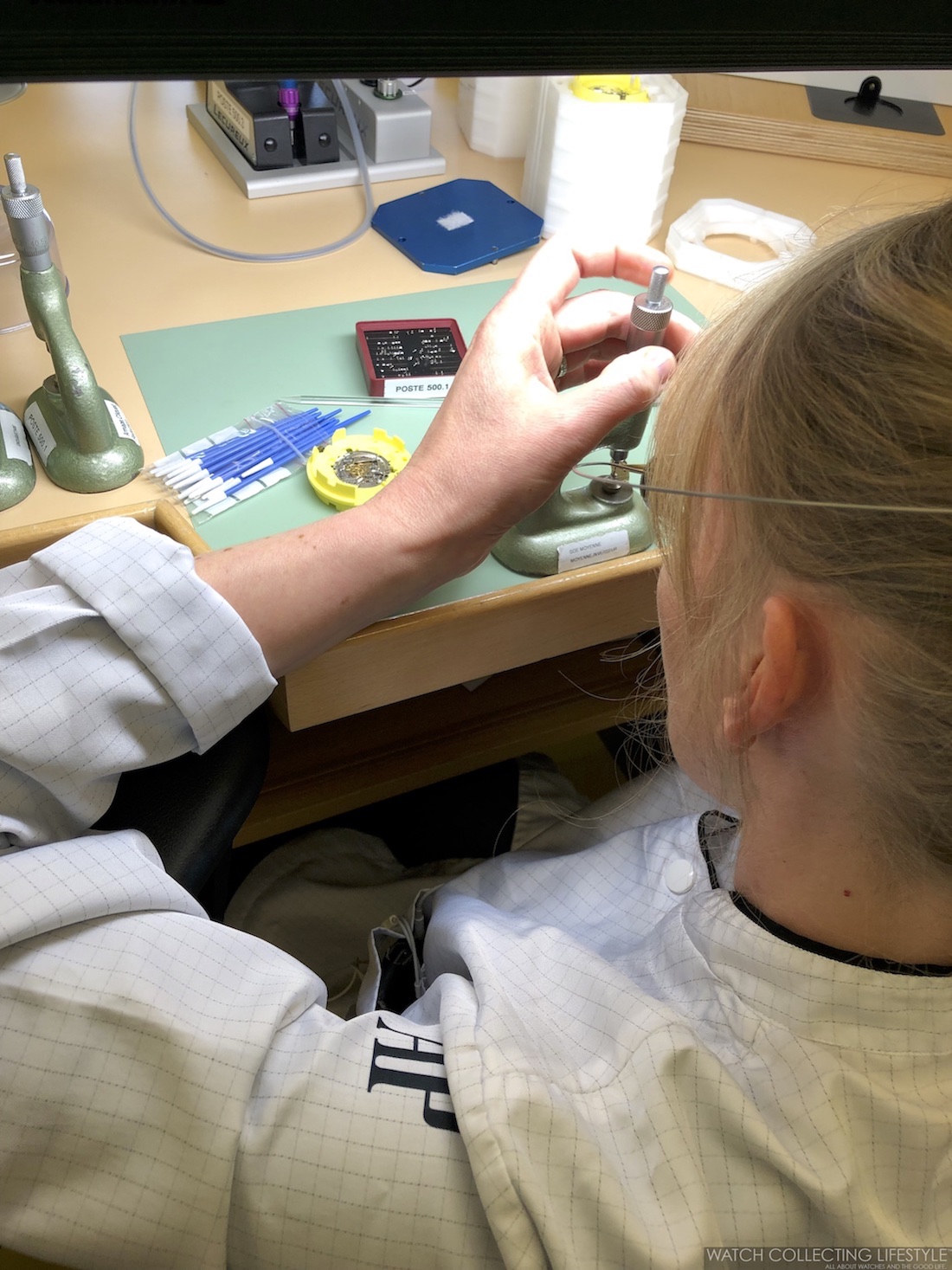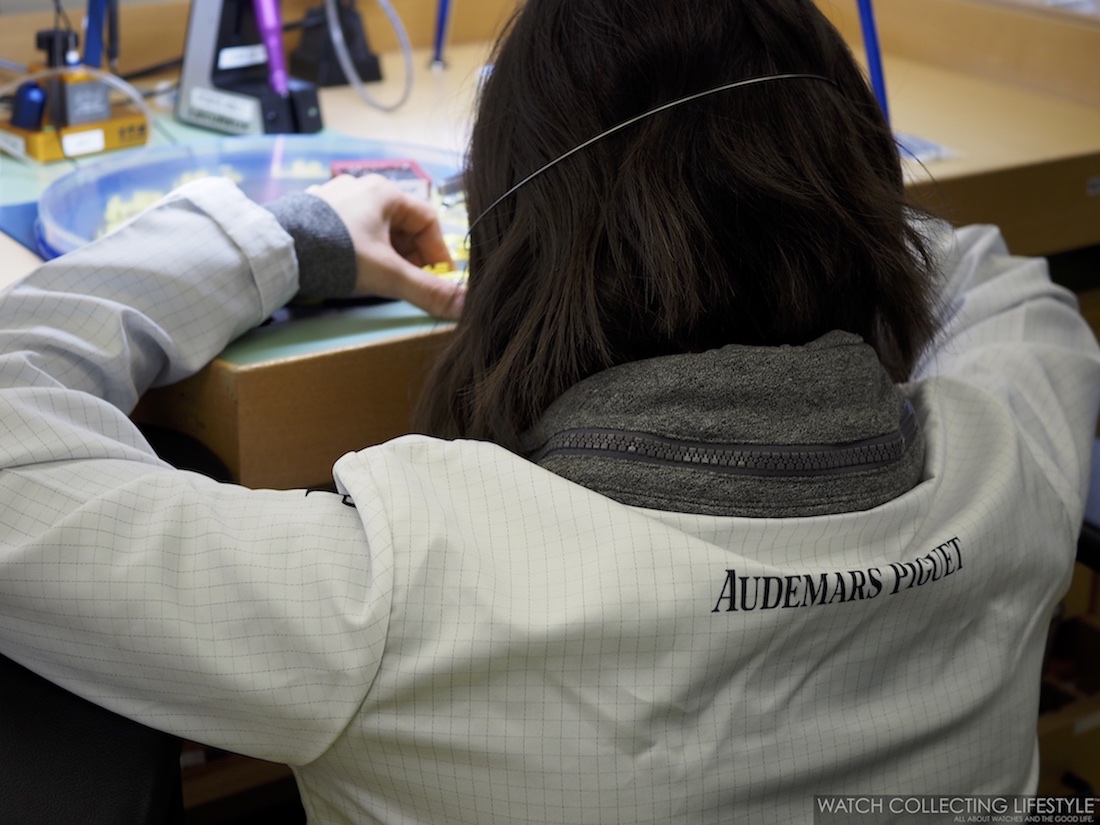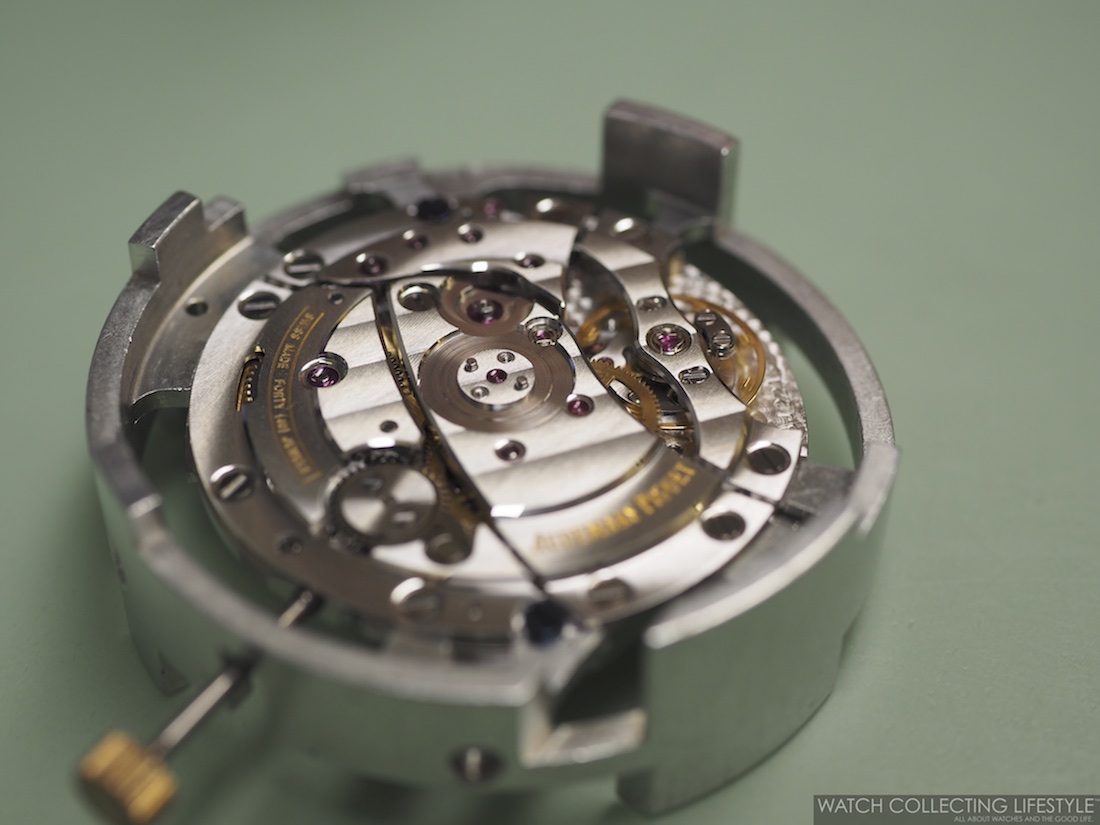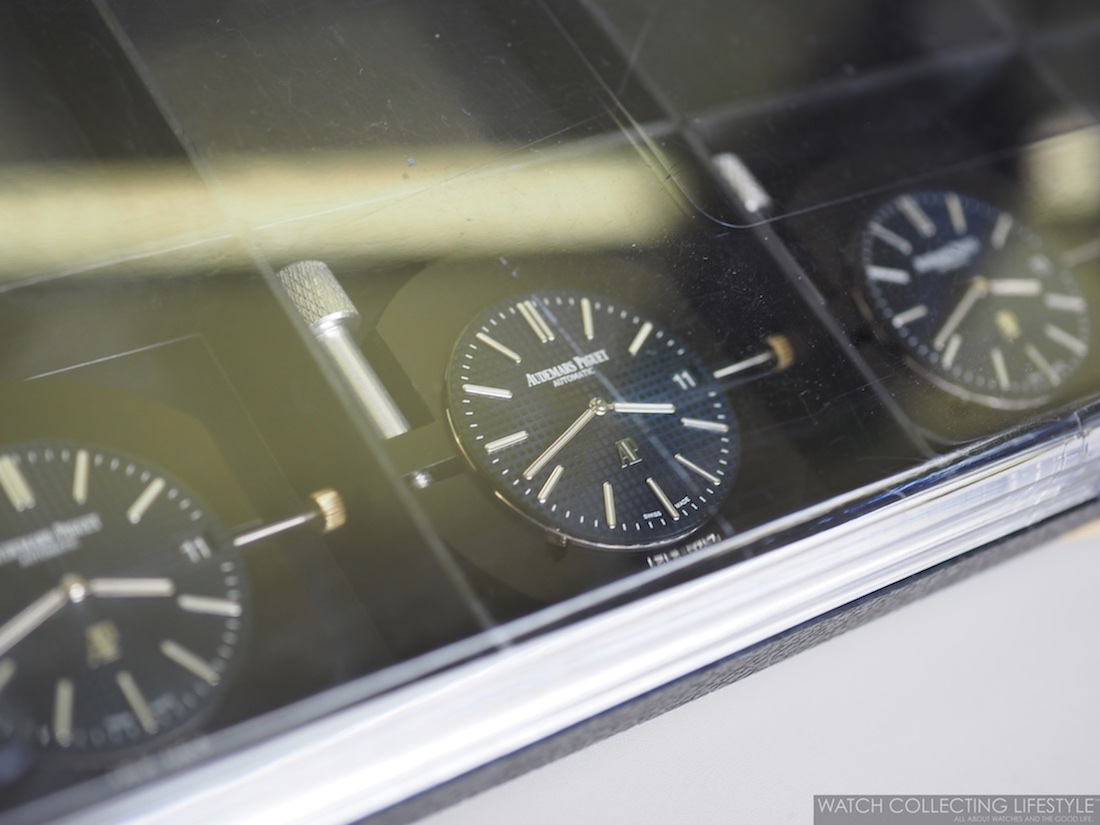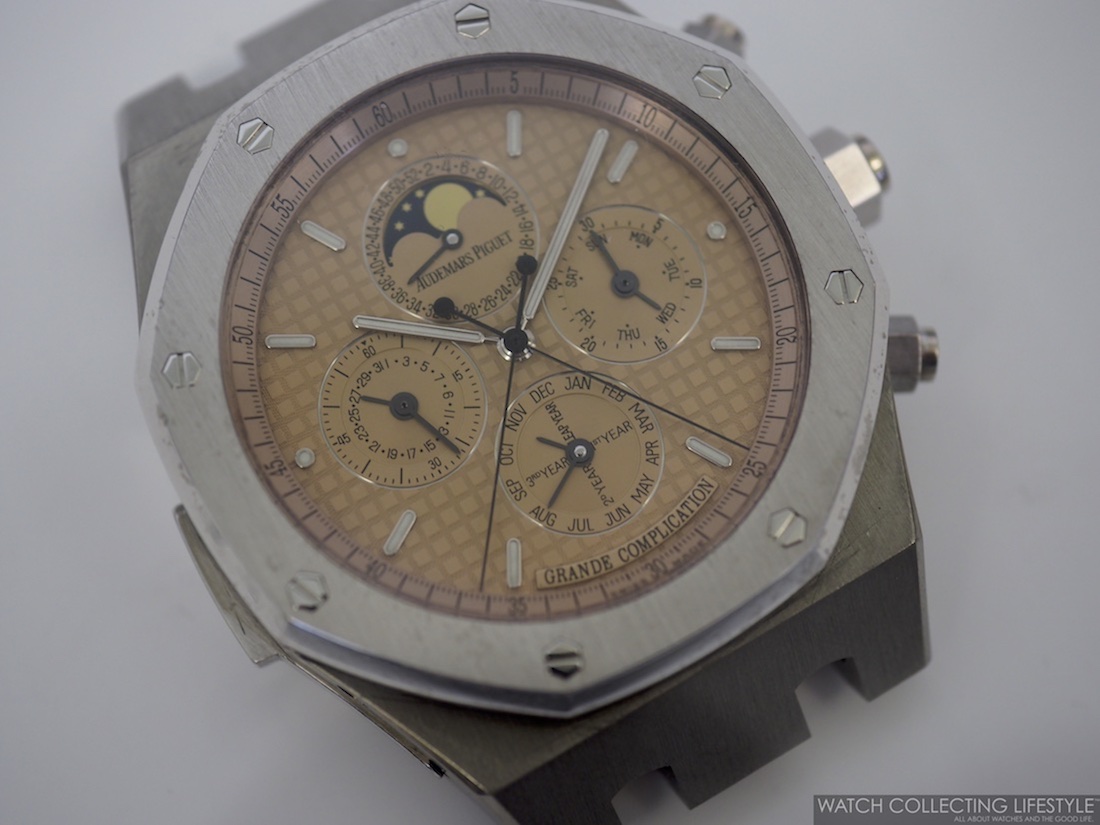By H. Trujillo — Founder & Editor-in-Chief
Back in 1998, I purchased my first Audemars Piguet Royal Oak, it was a stainless steel ref. 5402ST A-series that I should've never sold. After buying that first AP, the two-tone Royal Oak ref. 5402SA you see in the picture above was the one that followed. For 20 years as an AP collector and 28 years as a watch collector, I've longed to visit the Audemars Piguet manufacture in Le Brassus, Switzerland. In 2013, right around the launch of Watch Collecting Lifestyle, I was able to visit the Audemars Piguet Museum —which you can read about it here— but couldn’t visit the manufacture at that time.
Last week, this 20-year longtime dream finally came true after I was invited by Audemars Piguet to join a very small group of watch collectors from the West Coast in what turned out to be an unforgettable trip. This very special trip included a couple of nights in Lausanne at the Beau-Rivage Palace, a visit to the Audemars Piguet Manufacture in Le Brassus, a couple of nights in Zürich at the Park Hyatt —a very special hotel for me— and two full days at Art Basel —an event for which AP has been a global Associate Partner since 2013— in Basel, Switzerland.
Upon arrival in Geneva, I was promptly picked up at the airport by Audemars Piguet and transferred to the Beau-Rivage Palace Hotel in Lausanne which is about 50 minutes away from the Vallée de Joux and Le Brassus where the Audemars Piguet Manufacture was established in 1875 by Jules Louis Audemars and Edward Auguste Piguet. Today, Audemars Piguet is the only watch company that is still in the hands of the descendants of their founding families.
Once checked in at the hotel and after being wowed by the breathtaking views from my room facing Lac Léman —Lake Leman— and the Swiss Alps, it was time to head downstairs for a negroni to start fighting the jet lag. Once I walked into the main corridor that leads to the Bar at the Beau-Rivage, I was pleasantly surprised by the autographed pictures hanging on the walls. These pictures of celebrities and personalities like U2's lead singer Bono, actress Sophia Loren, president Mikhail Gorbachev, half of Europe's royalty, singer Phil Collins, and even El Bulli's chef Ferrán Adria and late Sheikh Zayed bin Sultan Al Nahyan from the UAE are living proof that the walls of this legendary luxurious hotel that has been around for more than 150 years, have hosted some incredible personalities.
After ordering what turned out to be one of the best negronis I've had in Europe, it was time to head back upstairs to meet the rest of the group that I would be traveling with for the next five days. An eclectic and extremely friendly group of six watch collectors that came all the way from California and Oregon; two ladies and four gentlemen that were way too nice and way too much fun to hang out with were simply the perfect companions for this watchlife adventure.
After a little watch talk and brief introductions, we all headed over to our first group dinner at L'Accademia, a magnificent Italian restaurant located at the Beau-Rivage. This restaurant was the perfect setting for outstanding negronis, decadent food, tasteful cigars and for getting to know each other. All interconnected by the AP timepieces adorning our wrists, we all brought something special with us for the trip. In my case, it was the very first trip to Switzerland for two recently acquired watches, my new Royal Oak ref. 15400ST with ruthenium dial and my new Royal Oak Offshore 'Brick' ref. 26470OR with grey-ruthenium toned dial.
After a good night sleep and a much needed hearty breakfast that included several kouign-amman cakes, we headed over to Le Brassus at around 9:20am. Upon arrival, we were greeted with coffee at the Audemars Piguet Museum —another special feature to follow, even though we've been there before— and after spending a couple of hours there we were driven to a small Swiss chalet in the middle of the Vallée de Joux for a decadent lunch.
And just as if we had been witnessing the filming of a Ricola advertisement, an alpenhorn quartet was playing alpine tunes on their three-meter-long wooden natural horns of conical bore as we arrived at the chalet under a steady rain.
Immediately after lunch, we headed back to finally begin our visit of the AP manufacture where despite the dreary and rainy morning, at the time we arrived back it was all sunny and blue skies all around.
By 2:30pm, I had already walked through the front doors of the newest and largest building at the Audemars Piguet manufacture. Suited up in electric blue guest lab coats we promptly started our visit of the manufacture. While the manufacture and its different workshops are all scattered throughout different buildings and ateliers, we were still able to experience how the magic is done at Audemars Piguet in Le Brassus.
Once inside this building, the first thing the visitors will notice is a beautiful Quantième Perpétuel Royal Oak wall clock flanked by three flower vases. And just like at any other watch manufacture we've visited before, as soon as you slip on your light blue booties, you then know that the fun is about to start and your visit is for real.
During our visit, our very first stop was at the assembly workshop where the automatic calibre 3120 was being inspected, assembled, oiled and regulated. With a fully manual process —except the oiling of the jewels which is done by a computerized robot— and with no less than four regulation operations, the automatic calibre 3120 comes to life in this workshop. This movement that is the beating heart of all modern automatic Royal Oaks —with the exception of the Royal Oak Jumbo Extra-Thin— and Royal Oak Offshore Divers, undergoes a very stringent number of quality control operations as well as microscopic scrutiny before making its way into the casing workshop.
After being mesmerized for almost 40 minutes in this workshop, we then headed over to the complications workshop where watches like the Royal Oak Double Balancier Openworked, the Royal Oak Openworked, the Royal Oak Quantième Perpétuel and even the Royal Oak Jumbo Extra-Thin are assembled, regulated and quality controlled.
Here, we had the pleasure of running into several examples of the highly scarce and coveted Royal Oak Jumbo Extra-Thin ref. 15202ST in stainless steel and the ref. 15202BA in 18K yellow gold with vintage-inspired champagne dial, a tray full of black ceramic and stainless steel Royal Oak Perpetual Calendars and also into a few examples of the new Royal Oak Perpetual Calendar exclusive for Latin America ref. 26584OR.OO.1220OR.01 —this particular watch features a gorgeous pink gold toned dial with dark blue subdials and is available in a 100-piece limited edition —you can read all about it here.
A very thorough explanation was given to us about the new in-house automatic calibre 5134 and all of its components. It was incredible to see all the 374 individual parts that compose the movement and to further understand its complexity. This new movement is not a modular perpetual calendar calibre as the 2120/2800 but a completely redesigned one based off of its predecessor the 2120. Its moonphase indicator that is laser microstructured and laid on aventurine is simply out of this world once you get to see it by itself and outside the movement.
Lastly and just as if the complications workshop had not been impressive enough, we wrapped up our visit with a brief stop at the Grande Complications workshop where no more than four watchmakers work on every Grand Complication offered by Audemars Piguet. For those of you curious to know where the tourbillons are assembled, those are put together at a small workshop with also four watchmakers inside the building that currently holds the Audemars Piguet Museum. Here we enjoyed the newest iterations of the Royal Oak Offshore Grande Complication in black and white ceramic, as well as a gorgeous example of the Royal Oak Grande Complication in tantalum with salmon dial.
While it might seem that many operations and workshops were not documented on this visit, in reality is nearly impossible to visit other workshops such as case making, machining, bracelet production, dial production, etc. in one day, as these other departments are scattered throughout no less than four different buildings in Le Brassus as well as a couple other locations outside of Le Brassus like APRP —Audemars Piguet Renaud & Papi— and Audemars Piguet Le Locle, where R&D is conducted and tourbillons as well as other components are manufactured. Regardless of the time crunch, this visit was simply incredible and the trip of a lifetime. Looking forward to a follow up visit to check the rest of the Audemars Piguet workshops.
When it comes to hospitality, very few brands do it as well as Audemars Piguet. Very special thanks to everyone at AP that made this longtime dream a reality. Also, thank you for the goody bag and for an unforgettable Le Brassus Experience. More to follow from this incredible trip. Stay tuned!
For more info on Audemars Piguet click here.








